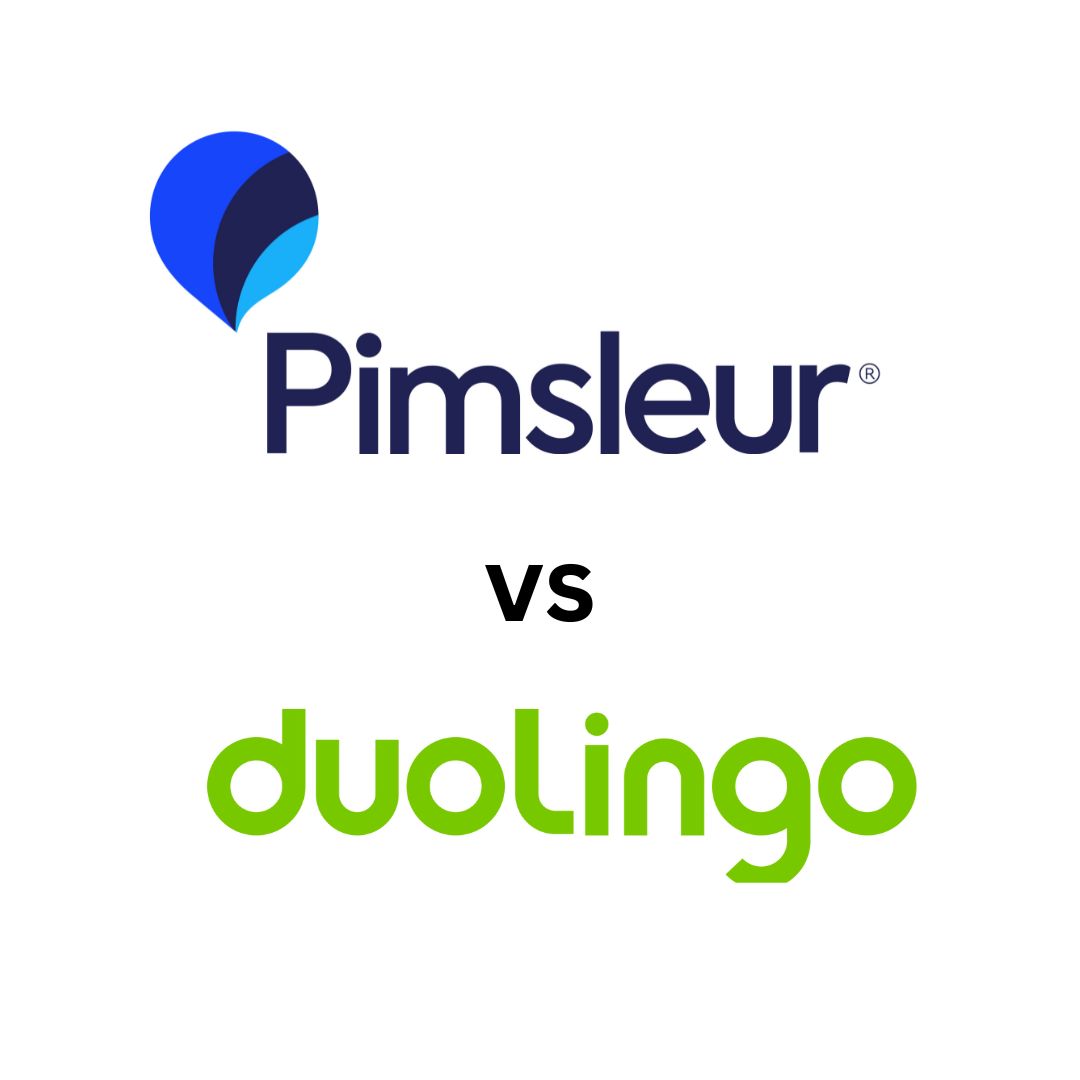If you’ve lived long enough, learning a new language has likely been a bucket list item at some point. More often than not, this gets severely downgraded from a bucket list item, to something that would be nice, to something that never happens at all.
The reason for this is simple – learning a foreign language is hard.
You’re going from your native tongue to trying to pick up words, sounds, and meanings from a language that your brain doesn’t understand in the slightest. There is also an added difficulty for Americans.
With the exception of people who live in massive cities and go out of their way to use another language spoken to them, most of us do not get a chance to practice using the language in a natural setting. Add to that that foreign language education in the United States is atrocious, and you get a recipe for the average American thinking that they are no good at picking up another language.
Enter Pimsleur. This is the method that I’ve been using for at least 10 years. I’ve been using it for so long that I had the CD’s of the Russian Pimsleur. Well, now it’s an easy to use app, and it’s easy for anyone to get their footing in the language.
The Pimsleur language program offers a framework you can use to learn a language. This program is available in 51 different languages. I’ve used the program, and can offer some insight into what it is, what it isn’t, and what you can expect when you take the program.
We’ll explore what I learned in this Pimsleur review.
Learning like a baby
There’s no right or wrong way to learn a language, but there are some ways that are better than others. When embarking on something as ambitious as language learning, it pays to do it as organically as possible.
Some people might enjoy sitting in a classroom and reading definitions from a textbook. That’s not my preferred learning style. Not only that, but learning a language this way never forces you to use it or think in it. Instead, you come away with an incredible ability to recite verb conjugation tables, but you’ll never be able to work with the language in conversation because you never practiced that way.
The Pimsleur method gives you the benefit of learning your new language the same way you learned English (or your native tongue) – by hearing the new words spoken, storing them in your mind, and using them.
The Pimsleur programs are all listen and repeat. While the updated features of the app have some flashcards, the best way to use the program is exactly how it was developed: listening and repeating. And you will repeat A LOT.
I only made it through Russian level 1, but I’m still shocked at how easily I remember how to ask someone if they speak Russian or where they are from. The program also prompts you to respond to questions in the language, using the language, and then you self-critique your response. The aim is to match the teacher in terms of accent, an underrated part of learning another language.
Pimsleur learners will speak from day one, in your first lesson of the program. There’s no reading requirement. This make it attractive for anyone intimidated by learning another script or alphabet. Instead, you use spaced repetition to learn phrases and their meanings. You’ll be reminded of these phrases at spaced intervals, training your brain to recall the information in an easy and organic way.
Don’t expect in-depth grammar explanations. Rather than learning languages in the way that grade school classes teach them, you’ll learn the language how you did when you were a baby – by getting more comfortable with it little by little, remembering the connections, and using words and sentences the soonest that you are able.
It gives you incredible recall
The Pimsleur method is based on the research of French-American linguist, Dr. Paul Pimsleur. His method of spaced repetition, as opposed to struggling and straining with definitions, aims to naturally convert the information you learn from short-term to long-term memory.
I put this science to the test with the Russian Pimsleur program a few years ago. I haven’t touched the program since then, but I still have no problem stringing together basic sentences in Russian.
Even my small amount of Russian is enough to impress Russian speakers who are legitimately curious as to why a black American knows Russian.
A convenient crash course
Let me go ahead and answer the main question that you likely have – Pimsleur won’t make you fluent or even proficient in your target language. That requires a lot more than just developing an ear for the language.
No language learning program alone will accomplish this. That goes for Duolingo, Babbel, Rosetta Stone, and any of the other popular language courses.
But what you do get is a helpful crash course in the language that can get you up to speed with important parts of the language of your choosing. You will develop the ability to create sentences and build your vocabulary. Language learners will do it conversationally by relying on speaking.
My favorite Pimsleur method feature is that it has a mode strictly for driving. With this mode, your smartphone turns into a stripped down version of the Pimsleur app that you can use while you drive.
Thorough lessons, plenty of language options
The lesson options for Pimsleur are thorough. Of the 51 languages available, you can get up to speed on some of the most spoken in the world, including Spanish (Latin American and Castilian), French, German, Mandarin, and Japanese.
The Pimsleur method has programs for several other languages, including:
- Russian
- Brazilian Portuguese
- Korean
- Hebrew
- Arabic (Eastern and Standard)
- Greek
- Tagalog
- Haitian Creole
- Hindi
- Armenian (Eastern and Western)
- Croatian
- Vietnamese
Each program comes with different levels. Updates have been released throughout the years, and some languages have more lessons than others. Pimsleur Spanish features 5 levels with 30 a piece, totalling 150 lessons. This is the model for the most popular languages.
Less popular languages have far fewer lessons. Languages like Arabic, Hebrew, and Korean have 3 levels with 90 lessons, while languages like Albanian, Dutch, and Punjabi feature 1 level with less than 30 lessons.
Accurate dialect information
Another great part about Pimsleur is that the method is accurate with its dialects. I started learning Portuguese in preparation for a trip abroad, and found that Pimsleur was one of the few language learning resources that had content for European Portuguese, rather than Brazilian.
Brazil is home to 214 million people, while Portugal has a population of roughly 10 million people. So while supply and demand wins out, anyone who has tried to learn European Portuguese has experienced the frustration of trying and failing to find an abundance of content.
Having access to accurate dialects will help you sound like native speakers, and makes sure you learn the intended version that you’re interested in.
Easy access and reasonable prices
People who wanted to try the Pimsleur method back in the day had to pay a lot more for it than they do now. The advent of apps and smartphones makes it easy for people to take Pimsleur on a subscription basis.
Like many apps of its kind, Pimsleur also comes with a 7-day free trial before starting your monthly subscription. After the trial is up, you can learn at a price of $19.99 per month. I’ve used a lot of language programs for my preparation to take the D.E.L.E. examination for Spanish at level B2, and you won’t find any at a much lower price.
Before the age of smartphone and apps, the Pimsleur used to be relatively and restrictively expensive, but the app now allows you to go through any program on a subscription-based model of $19.99 per month with a free 7-day trial.
This opens you up to an abundance of audio lessons for a reasonable cost.
A quality language learning program
So, is the Pimsleur course worth it? All in all, I’d say yes. It’s a quality language learning program that isn’t a cheat code, but will give you a sound foundation for learning a new language in a real-life way.
Most importantly, you’ll be able to immediately speak with someone and be understand (and likely, understand them). This builds a high level of confidence that will motivate you to continue on your language learning journey.
You can take the spaced repetition concept and use it to become a sponge. Use Pimsleur to jumpstart your learning, as you begin reading books, watching TV and movies, listening to podcasts and audiobooks, and immersing yourself in the language that you’ve always wanted to learn.
Just as importantly, make sure that you have a reason for wanting to learn the language. I often chose to learn a language because I was traveling somewhere or otherwise had an interest in the culture or the people.
Once you know why you want to learn a new language, Dr. Pimsleur’s program is a worthy tool to consider.
If this was helpful to you, grab it using my affiliate link here. I don’t make much, but it’s an easy way to show thanks.




